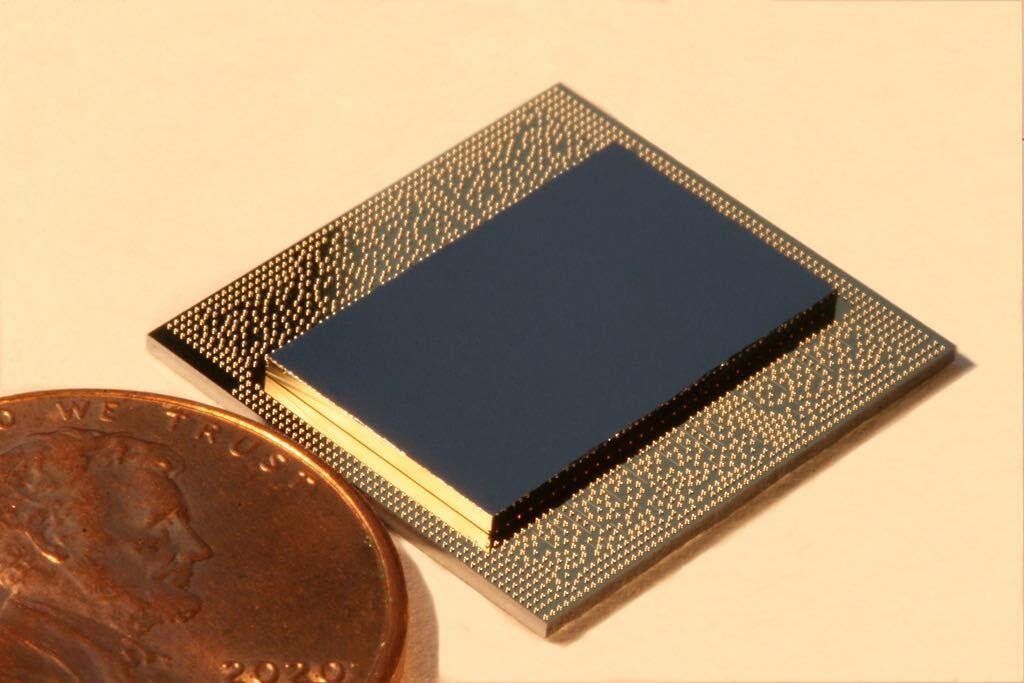
Qiskit Metal is an open-source platform that automates parts of the design process for quantum chips.
Image: IBM QuantumBuilding the hardware that underpins quantum computers might not sound like everybody’s cup of tea, but IBM is determined to make the idea sound less challenging.
The company has announced the general availability of Qiskit Metal, an open-source platform that automates parts of the design process for quantum chips, and which IBM promised will now let “anyone” design quantum hardware.
Big Blue detailed the progress made with Metal since the tool was first announced late last year as part of the company’s larger Qiskit portfolio, which provides open-source tools for creating programs that can run on IBM’s cloud-based quantum devices.
SEE: Building the bionic brain (free PDF) (TechRepublic)
While most of Qiskit’s resources focus on building applications that can be executed on quantum machines, Metal targets a brand-new audience, providing software to help design the components that make up the hardware itself.
The idea is to let users play around with pre-built components on the platform to produce state-of-the-art chips for superconducting quantum devices in a matter of minutes – a process that traditionally takes months of manual design, analysis and revisions for scientists in the lab.
While automation processes are already firmly in place to accelerate the design of classical integrated circuits, the same cannot be said for quantum computers. As Zlatko Minev, IBM research staff and lead of Qiskit Metal, explains, quantum chips still require an intricate, time-consuming fabrication process.
“How it normally happens is, you take a grad student like my former self, you put them in the lab for six months or so to design a chip, and out comes a chip,” he tells ZDNet. “It would take a lot of work, it was very laborious. So one of the things I wanted was to make this easier for myself when I got to IBM, by automating the process.”
Qiskit Metal is, at first glance, fairly straightforward. The process starts with setting targets for the chip, such as a particular qubit frequency or qubit-qubit entanglement; users can then design an initial layout in a few minutes, using a library of pre-defined, customizable quantum components.
Metal then carries out both a classical and a quantum analysis to predict the performance of the device. “This is all the stuff you would normally do manually, which I had to do all the time,” says Minev. The platform can anticipate parameters such as qubit frequencies, convergence or entanglement, letting users go back and forth to tweak their model until the optimal design is found.
To check the reliability of Metal, IBM’s Qiskit’s team partnered with Chalmers University of Technology, which already has strong experience in building quantum test chips. The researchers were able to design a competitive eight-qubit chip using IBM’s platform, but in a record 30 minutes. It took another hour to run the design on a simulator, where the device performed as expected based on Chalmers’ previous experiments.


A rendering of a four-qubit quantum chip in Qiskit Metal.
Image: IBM QiskitAnother one of the early applications of Metal saw the tool deployed during a Qiskit hackathon in South Korea earlier this month. Participants gathered in teams of five or six, with the objective of designing a quantum chip from scratch in a couple of days. Using Metal, all of the teams successfully built two-qubit chips using superconducting qubits in less than 24 hours.
A partnership with the University of Tokyo also produced a five-qubit quantum processor called Tsuru in just a few hours and over WebEx.
As Minev explains, Metal is not designed to build large-scale quantum chips to compete against the experts currently developing fully-fledged quantum computers. Rather, the tool is meant to let users try their hand at designing quantum hardware, and optimize their models in ways that might benefit the entire ecosystem.
“If you’re trying to build quantum devices at a large scale, there is a lot more that goes into this, it’s not an easy job,” says Minev. “Metal is rather aimed at small-scale, rapid design and prototyping. The idea is to create new devices and optimize designs, to push and improve the scientific techniques.”
SEE: The EU wants to build its first quantum computer. That plan might not be ambitious enough
Central to the project is the ease of access. IBM is hopeful that Metal will eventually be accessible to users with little to no programming knowledge, and encourage experts from all fields to wet their feet with quantum.
This is important because improving quantum hardware will require input from experts from a host of different backgrounds – all of whom aren’t necessarily trained in the physics of quantum computing. “A lot of challenges in the field are yet to be resolved,” says Minev, “and it doesn’t just take physicists, but also engineers and software developers, among others. We want to give a point of entry for all these folks to be able to come together through an easy interface.”
Like quantum computing, Metal is in its early stages, and Minev hopes that as the field grows, so will the platform incorporate increasingly sophisticated quantum hardware and modeling advances. For now, though, IBM has warned that users are likely to face a fair share of bugs to fix, and has encouraged curious users to come forward and trial the tool, sharing feedback and criticism as they go with the rest of the open-source community.






















